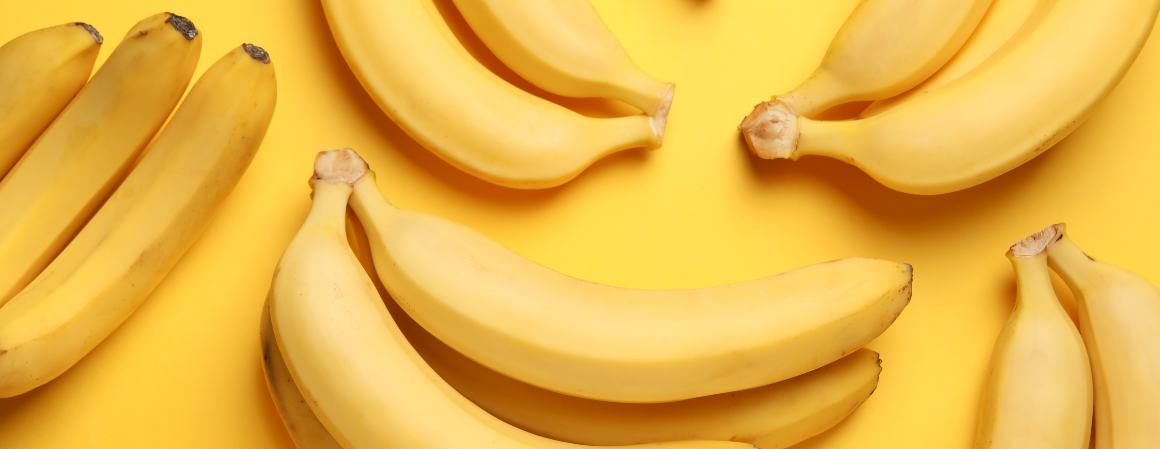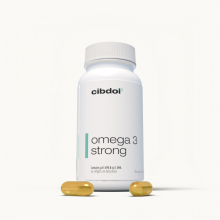Is Banana Rich in Omega-3?
Published:
Bananas are one of the most popular and nutrient-dense fruits. Known for providing key minerals like potassium and magnesium, bananas are a dietary staple for many people. However, they are not a significant source of omega-3 fatty acids. This article will analyze the omega-3 content in bananas and provide better food choices to help meet your daily needs of this essential fatty acid.
Contents:

Overview of Omega-3 Fatty Acids
Omega-3 fatty acids are a type of polyunsaturated fat that the human body requires but cannot produce on its own. The main omega-3s are:
- ALA (Alpha-Linolenic Acid): Found in plant foods and can convert in the body to active EPA and DHA
- EPA (Eicosapentaenoic Acid): Supports heart health and reduces inflammation
- DHA (Docosahexaenoic Acid): Important for brain function and development
Experts recommend adults consume at least 250-500 mg per day of EPA and DHA for proper health and wellbeing. However, average intakes tend to be well below this target.
While oily fish like salmon provide EPA and DHA directly, plant-based foods like walnuts, flaxseeds, and leafy greens offer ALA that the body can partially convert to the active forms.
Assessing the Omega-3 Content in Bananas
Bananas contain only trace amounts of any type of fat, including omega-3 fatty acids.
According to the USDA National Nutrient Database, a medium 7” banana (118 grams) provides:
- Total Fat: 0.4 grams
- Saturated Fat: 0.1 grams
- Polyunsaturated Fat: 0.1 grams
- Omega-3 Fatty Acids: 9 mg
So in a whole medium banana, you would get just 9 mg of ALA omega-3, which is a negligible amount compared to daily requirements.
The small amount of omega-3 is consistent whether the banana is raw or cooked. Bananas are simply not a significant source of this essential fatty acid.
Why Bananas Lack Omega-3s
There are several reasons why bananas contain barely any omega-3 ALA:
- Bananas are a starchy fruit, providing mostly carbohydrates and sugars rather than fats or protein.
- Omega-3 fatty acids are found in the highest amounts in fatty plant foods like nuts, seeds, and their derivative oils.
- Bananas grow best in tropical climates and do not require high levels of lipids in their structure for insulation.
- The minimal fat bananas do contain is mostly saturated and monounsaturated fat, not polyunsaturated omega-3.
- Bananas are picked unripe and do not fully develop much fat content when ripening after harvesting.
So while bananas are nutritious in other ways, their low overall fat composition means virtually no omega-3 content.
Benefits Bananas Do Provide
While not a good omega-3 source, bananas still offer valuable nutrition:
- Potassium – One banana contains about 400mg potassium, helping maintain fluid balance and heart health.
- Magnesium – Bananas provide about 32mg magnesium per serving to support muscle and nerve function.
- Fiber – One banana has 3g of fiber to aid digestion and feed beneficial gut bacteria.
- Vitamin B6 – Bananas supply about 0.5mg vitamin B6 to assist metabolism and red blood cell formation.
- Antioxidants – Bananas contain dopamine and catechin antioxidants that reduce oxidative damage.
- Carbs – A banana has 27g carbs to provide an easily digestible source of energy.
So bananas remain a healthy fruit choice as part of a balanced diet, just not for their omega-3 content.
Better Food Sources of Omega-3
While bananas themselves lack significant omega-3, you can turn them into a more omega-3-rich food by combining them with certain mix-ins.
Some options to incorporate more omega-3s into banana dishes:
- Add 1 tablespoon of chia seeds or flaxseeds to your morning banana smoothie (over 5,000mg ALA)
- Top banana pancakes or oatmeal with crushed walnuts (2,500mg ALA per ounce)
- Mix banana with Greek yogurt and sprinkle with chopped almonds (500mg ALA per ounce)
- Blend banana into a smoothie bowl with avocado (250mg ALA per half fruit)
- Make banana bread using walnut oil instead of vegetable oil (10,000mg ALA per tablespoon)
- Prepare banana splits with pecans, almond butter and black raspberry sauce (800mg ALA for an entire dessert)
Getting creative with toppings and mix-ins brings a hefty omega-3 punch to complement the natural benefits of bananas.
Top Whole Food Sources of Omega-3
To meet your daily omega-3 needs, emphasize these foods offering the highest amounts:
ALA Plant Sources:
- Flaxseeds: 7,196 mg per 100 grams
- Chia seeds: 5,060 mg per 100 grams
- Walnuts: 2,570 mg per 100 grams
- Soybeans: 1,241 mg per 100 grams
- Navy beans: 237 mg per 100 grams
- Kidney beans: 406 mg per 100 grams
- Brussels sprouts: 564 mg per 100 grams
EPA/DHA Seafood Sources:
- Salmon: 4,123 mg per 100 grams
- Sardines: 2,205 mg per 100 grams
- Anchovies: 951 mg per 100 grams
- Atlantic mackerel: 1,699 mg per 100 grams
- Rainbow trout: 983 mg per 100 grams
- Oysters: 672 mg per 100 grams
Aim for a variety of both plant and seafood sources to obtain both ALA and the active EPA/DHA forms.
Should You Take an Omega-3 Supplement?
In addition to omega-3-rich foods, taking a fish, krill, or algal oil supplement can help ensure you meet daily recommended intakes for EPA and DHA if your diet is insufficient.
Look for quality brands that are independently tested for purity and label specific amounts of EPA/DHA per capsule. Avoid rancid tasting products.
Key Takeaways
- Bananas provide just 9mg omega-3 ALA per medium fruit, making them a poor source.
- Bananas lack omega-3s due to their low overall fat content and composition.
- Bananas remain a healthy fruit for potassium, magnesium, fiber and vitamin B6.
- Boost bananas by combining them with omega-3-rich nuts, seeds, avocados or oils.
- Focus on fatty fish, walnuts, flaxseeds, chia seeds and beans for optimal omega-3 intake.
- If needed, supplements can provide EPA and DHA directly when diet falls short.
In conclusion, bananas are not a significant source of omega-3 fatty acids, but they can be incorporated into omega-3-rich recipes by pairing them with complementary ingredients. Eat bananas for their other nutritional benefits as part of a varied diet.










